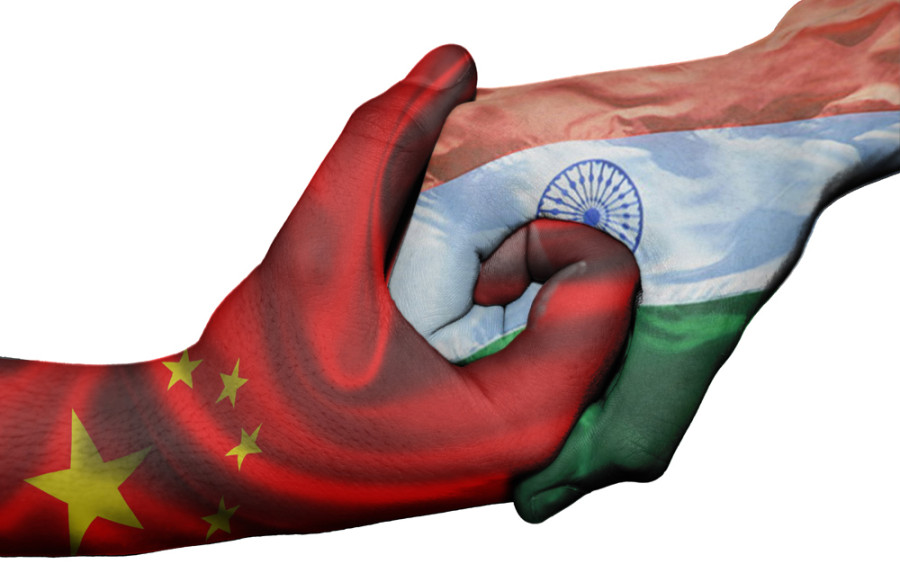Columns
The geopolitical scenario in South Asia
China and India are marching forward with their competitive aspirations to draw global attention.
Bam Dev Sharma
Europe dominated the 18th and 19th centuries. America dominated the 20th century, and now it is the time of Asia. This is not baseless speculation. China and India are marching forward with their competitive aspirations to draw the attention of the global community. In recent years, these two countries have been striding forward with steady economic growth and vigilant assertion at several global forums. Economically, China and India can exploit their resources and workforce for long-term development. More importantly, their role in the global order can be significant for long-term peace and prosperity. But dichotomies persist as their way of politics has always been different.
And it appears that this may destabilise Asian solidarity and play a detrimental role in the global order, too.
Historically, the two countries had a turbulent past under colonial rule. Japanese rulers controlled China for a long time, and India was a British colony for about 100 years. Their aspirations for freedom and independence emerged around the same time, and they have modelled their social, cultural, and economic ambitions. Though China is a socialist country with a controlled economy, and India is a democratic country with periodic elections, they have embarked on resilient assurances with pride and prosperity to seek a role as global partners.
As Asia is becoming a prominent region, international partners are vying to gain favours from them. In recent times, America has come closer to India, while Russia is becoming China’s steady ally. Besides, the two countries are imperilled by their own internal issues. Their vast populations and huge expenditures require both of them to be engaged in longstanding strategies of economic persistence. From this standpoint, China and India, to some extent, are in an ambivalent coexistence with differing grounds.
Regarding security and ambition, they can stand apart. Some differences did turn India and China into enemies, wherein they fought a war in 1962. They still have some outstanding issues that need to be resolved like the line of control and border disputes. The Doklam standoff of 2017 is a recent example.
The two countries also have rising ambitions. India desperately wants a seat on the UN Security Council, but China is not happy about this. China is also striving to expand its influence in many countries to weaken American influence in the region through trade, commerce, joint ventures and investments. India wants to change gear with regard to regional ties. It does not seem to be adhering to traditional regional operations. One example is the South Asian Association for Regional Cooperation (SAARC), which is almost dysfunctional. Ignoring this group, India is trying to show its influence through the Bay of Bengal Initiative for Multi-Sectoral Technical and Economic Cooperation (BIMSTEC) by isolating its adversary Pakistan.
India seems to be consolidating its influence in Bangladesh, Bhutan, Nepal and Sri Lanka with development collaboration and joint ventures. China is not silent, though; it has also shown its presence in these countries through joint partnerships. One of its initiatives is the Belt and Road Initiative. China is providing soft loans to many countries; however, it is studying their natural resources for probable joint ventures. China is very cautious about its security and long-term geopolitical consequences when undertaking joint ventures. These massive investments have shocked its arch-rival India. Observers see that India is loosening its grip in the South Asian region. China is enigmatically pursuing development and somehow influence diplomacy, which quite naturally, India is following closely.
Despite these competitions and rivalries, the two countries have to come to a point of reconciliation on some issues. The focus should be on improving issues of common interest like trade. The two countries have a wide trade gap. India, in fact, has a trade deficit of as much as $56 billion with China. The economy and economic development are exigent issues in their countries and the only way where there can be a win-win situation is when India and China cooperate. One way of doing so is to constantly engage in negotiations and meet each other’s concerns.
***
What do you think?
Dear reader, we’d like to hear from you. We regularly publish letters to the editor on contemporary issues or direct responses to something the Post has recently published. Please send your letters to [email protected] with "Letter to the Editor" in the subject line. Please include your name, location, and a contact address so one of our editors can reach out to you.




 6.73°C Kathmandu
6.73°C Kathmandu















